Hardscape.com Joins SiteOne Landscape Supply
ROSWELL, Georgia—June 4, 2024—(BUSINESS WIRE)—SiteOne® Landscape Supply, Inc. (NYSE: SITE) announced today its acquisition of AC Florida Pavers, LLC...
.png?width=740&height=550&name=Ernst%20Seeds%20(1).png)
Using Native Vegetation
.png?width=298&height=363&name=Ernst%20Seeds%20(2).png) Can slopes that are steeper than 3:1 be stabilized with native vegetation? When you look at native landscapes, you quickly can arrive at the answer. Native plants can stabilize slopes. The challenge for landscape contractors is to stabilize sites in a short period of time rather than the millennia taken by nature, and this can be done.
Can slopes that are steeper than 3:1 be stabilized with native vegetation? When you look at native landscapes, you quickly can arrive at the answer. Native plants can stabilize slopes. The challenge for landscape contractors is to stabilize sites in a short period of time rather than the millennia taken by nature, and this can be done.
In the eastern U.S., slopes often must be planted due to human impacts on the landscape rather than natural processes. Where this human activity involves the use of tracked equipment, the final pass of this equipment should leave tracks that are perpendicular to the slope rather than parallel. These tracks will help to hold the seed in place and retain moisture. If the tracks run in the same direction as the slope, the seed is more likely to be washed downhill.
.png?width=1780&height=1178&name=Ernst%20Seeds%20(4).png) Slope in Front of the Butterfly Conservatory in Hershey, Pennsylvania
Slope in Front of the Butterfly Conservatory in Hershey, Pennsylvania
Sloped sites are often broadcast seeded. If this is done with a hydroseeder using hydro-mulch, then a two-pass system should be used, where the seed is applied with 500 lbs./ acre of hydro-mulch in the first pass. For the second pass, 1,000 lbs./acre of hydro-mulch should be applied. This two step process ensures that the seed has better contact with the soil.
It is important to provide stabilization of the soil for the time between the planting and the time when the cover crop and native species stabilize the soil. For slopes that have an irregular surface, a flexible growth medium is often used. For surfaces that are smooth, erosion control blankets or a flexible growth medium are often used.
.png?width=1776&height=1176&name=Ernst%20Seeds%20(3).png)
For any steep slope planting, the use of a cover crop is recommended. A cover crop’s roots help to anchor the soil, and its foliage reduces the force of droplet impact upon the soil. For areas north of the Mason-Dixon Line, a good choice would be 30 lbs./acre of oats (January through July) or grain/winter rye (August through December). When planting south of the Mason-Dixon Line, 30 lbs./acre of oats (January through April), 10 lbs./acre of brown top millet (May through August), or 30 lbs./acre of grain/winter rye (September through December) are recommended. Should you choose to use annual ryegrass, do not exceed 12 lbs./acre. Higher quantities of annual ryegrass can smother the long-lived perennial species.
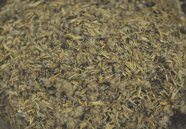 When formulating seed mixes for steep slopes, use a combination of short-lived cool season and long-lived warm season grasses. Typically, a combination of short-lived and long-lived wildflowers works best. Among the wildflowers, there should be one or more legumes.
When formulating seed mixes for steep slopes, use a combination of short-lived cool season and long-lived warm season grasses. Typically, a combination of short-lived and long-lived wildflowers works best. Among the wildflowers, there should be one or more legumes.
For cool-season grasses, a good choice would be to use one or more Elymus (Wildrye) species. By the end of a full growing season, Elymus species typically can provide the vegetative coverage of the soil required by regulations. They will provide this stabilization until the long-lived warm season grasses have become fully established in the third or fourth growing season. The warm season grasses we use in many of our slope mixes are deep rooted, Andropogen gerardii (Big Bluestem), Panicum virgatum (Switchgrass), Sorghastrum nutans (Indiangrass), and Tridens flavus (Purple Top). Other grass species that will often be part of slope mixes are Agrostis perennans (Autumn Bentgrass) and Panicum clandestinum (Deertongue). The foliage of these grasses intercepts rain droplets, reducing the force with which they strike the soil.
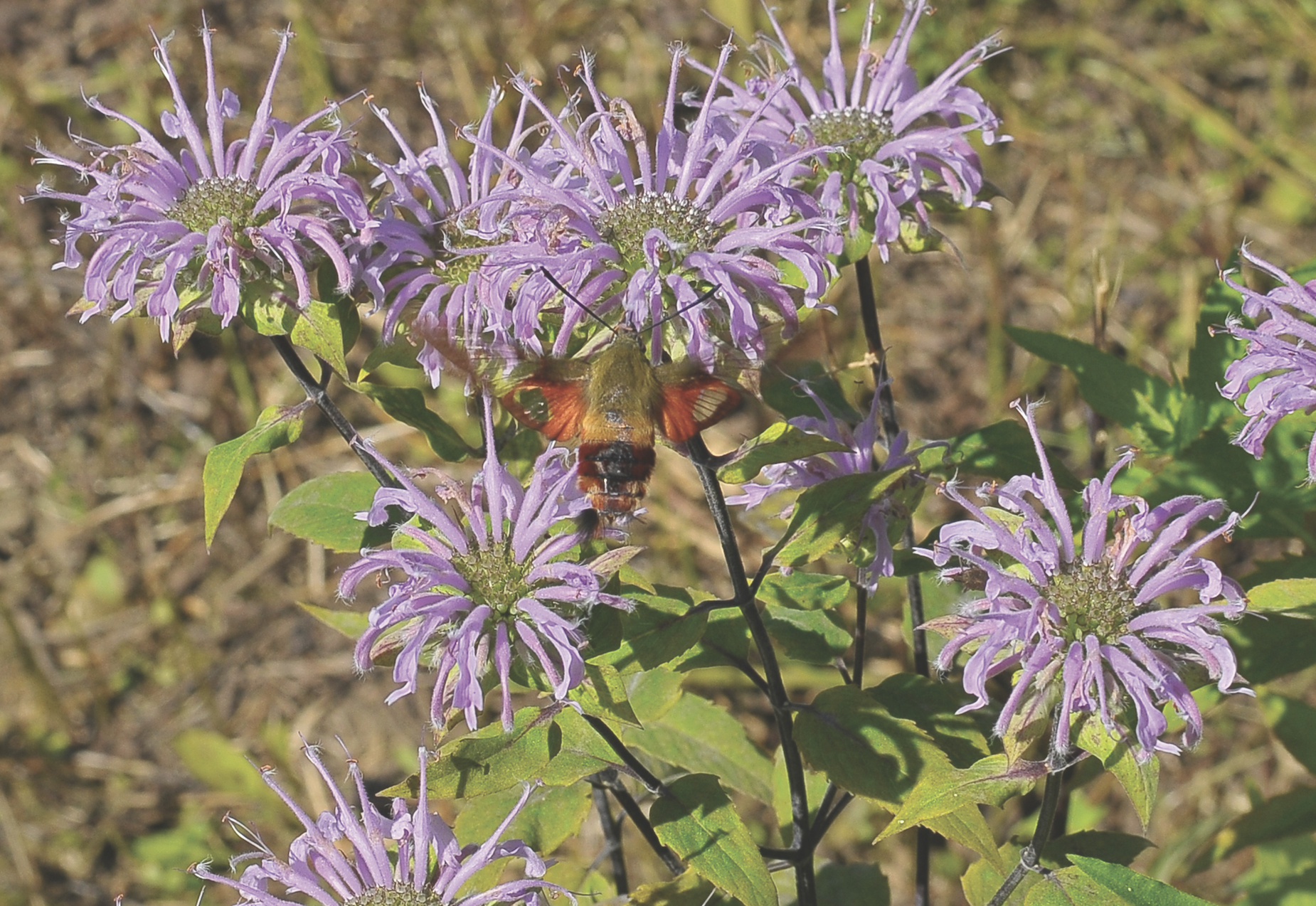 A Hummingbird Clearwing Visiting Wild Bergamot
A Hummingbird Clearwing Visiting Wild Bergamot
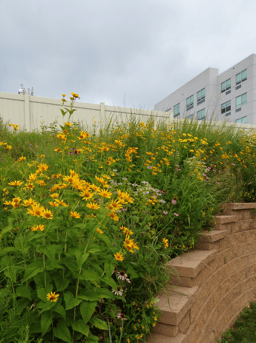 Native flowers are very useful components of steep slope mixes. Rudbeckia hirta (Black Eyed Susan) is a reliable species that produces good cover in the first growing season to supplement the coverage provided by Elymus species. Native legumes such as Chamaecrista fasciculata (Partridge Pea) provide the nitrogen needed to support the optimal growth of the other species in the mix. Chamaecrista fasciculata will often fill in openings not occupied by other species. Long-lived perennial wildflowers are key to steep slope mix formulations and include species such as Asclepias (Milkweeds), Aster (Asters), Monarda fistulosa (Wild Bergamot), Penstemon (Beardtongue) and Solidago (Goldenrods). These perennial wildflowers have foliage that reduces the force of droplet impact on soil and have roots that knit the soil together to reduce erosion.
Native flowers are very useful components of steep slope mixes. Rudbeckia hirta (Black Eyed Susan) is a reliable species that produces good cover in the first growing season to supplement the coverage provided by Elymus species. Native legumes such as Chamaecrista fasciculata (Partridge Pea) provide the nitrogen needed to support the optimal growth of the other species in the mix. Chamaecrista fasciculata will often fill in openings not occupied by other species. Long-lived perennial wildflowers are key to steep slope mix formulations and include species such as Asclepias (Milkweeds), Aster (Asters), Monarda fistulosa (Wild Bergamot), Penstemon (Beardtongue) and Solidago (Goldenrods). These perennial wildflowers have foliage that reduces the force of droplet impact on soil and have roots that knit the soil together to reduce erosion.
.png?width=1784&height=1182&name=Ernst%20Seeds%20(5).png)
Examples of Different Ways to Spread Seed Mixes
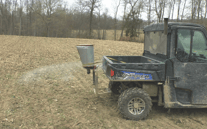 Broadcast Seeding
Broadcast Seeding
Consists of a hopper with a material regulating system in the bottom that feeds material either onto a spinner or directly onto the soil. This system is commonly used to spread seed, fertilizer, lime and other granular products.
Hydroseeding
Combines water, seed, fertilizer and, sometimes, hydromulch into a mix that is then pumped through a nozzle and sprayed uniformly over the area.
.png?width=1894&height=1406&name=Ernst%20Seeds%20(7).png)
Hand Seeding
Is effective and more efficient for small plots and difficult terrain.
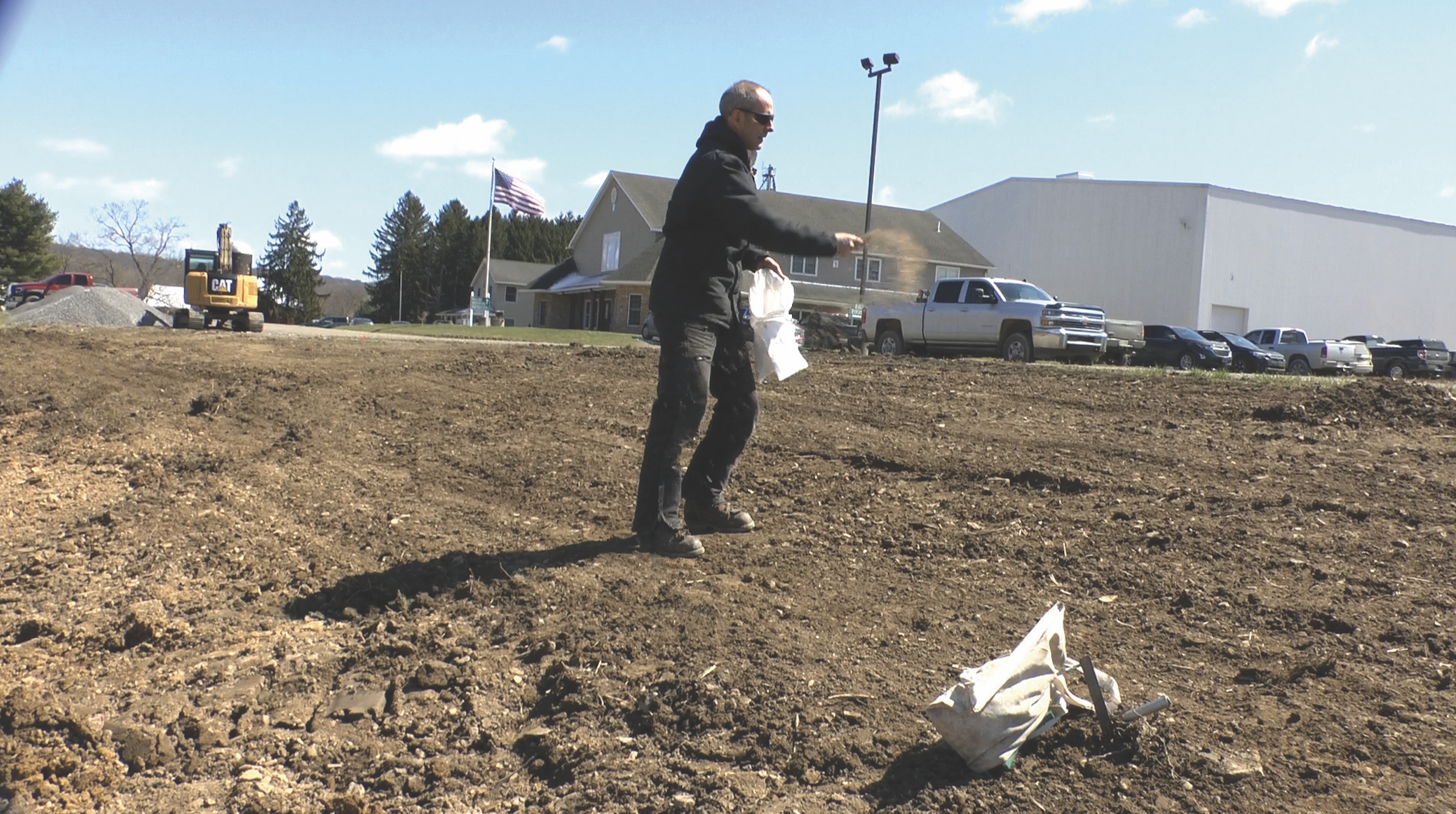
Ernst Conservation Seeds is the largest native seed producer and supplier in the eastern United States. We grow, process and sell hundreds of species of native and naturalized seeds and live plant materials, propagated on more than 9,000 acres in northwestern Pennsylvania.
Phone: (800) 873–3321
www.ernstseed.com

ROSWELL, Georgia—June 4, 2024—(BUSINESS WIRE)—SiteOne® Landscape Supply, Inc. (NYSE: SITE) announced today its acquisition of AC Florida Pavers, LLC...

BEATRICE, Neb. —June 14, 2023— With the season hitting its stride, Exmark is making it easier than ever to upgrade to the company’s latest stand-on...
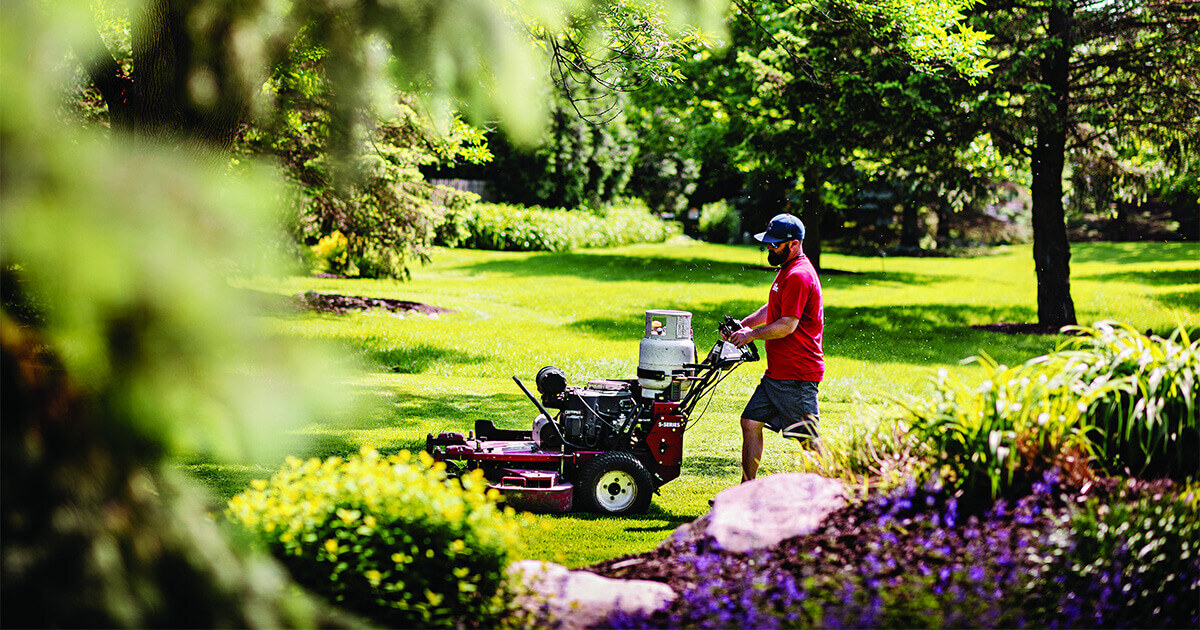
Richmond, VA (December 19, 2024)—As landscaping companies nationwide deal with rising operational costs and growing environmental regulations, many...